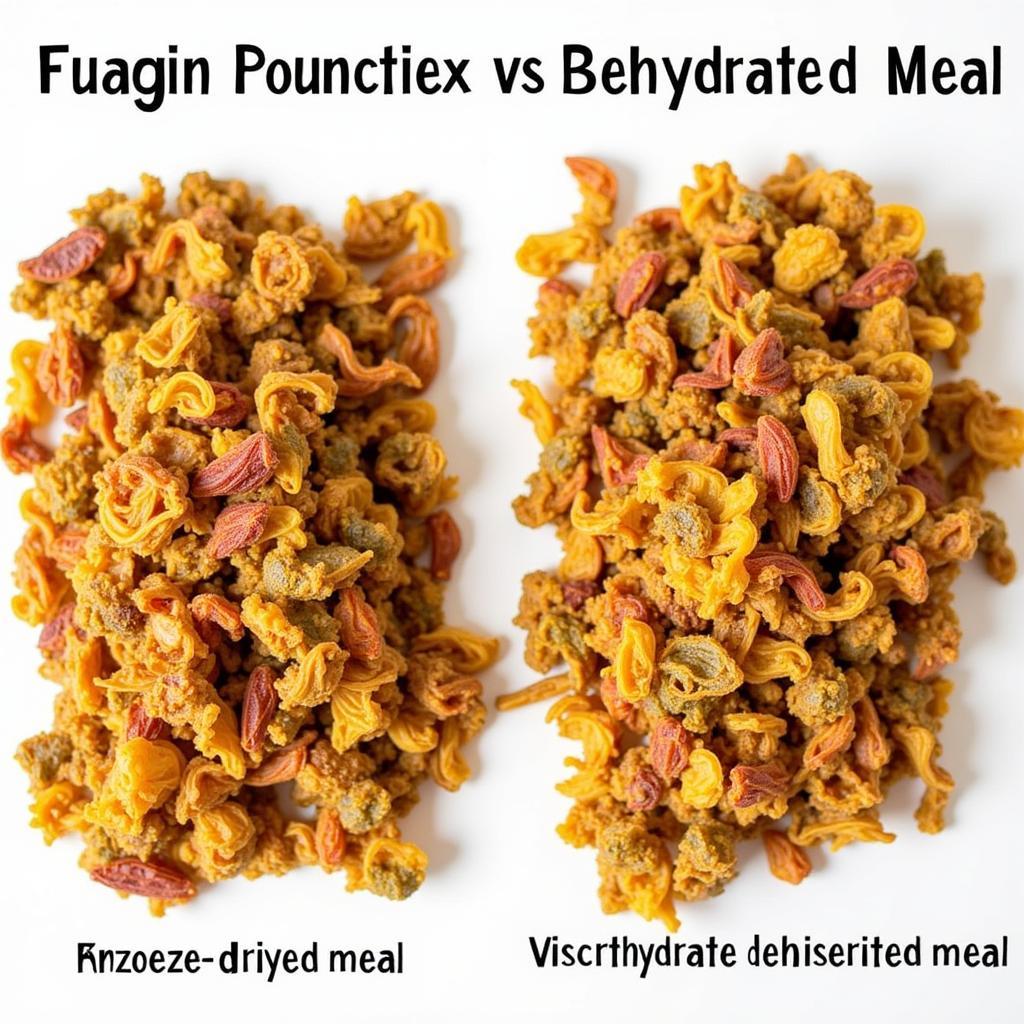Freeze Dried Hiking Food is a lightweight and convenient option for backpackers and hikers looking to minimize their pack weight without sacrificing nutrition. Whether you’re planning a weekend trek or a multi-day expedition, understanding the benefits and drawbacks of freeze-dried meals can be the difference between a satisfying meal on the trail and a rumbling stomach. After reading this post, you’ll be well-equipped to choose the best freeze dried hiking food for your next adventure.
Why Choose Freeze Dried Hiking Food?
Freeze-drying removes almost all the moisture from food, making it incredibly light and shelf-stable. This process preserves the nutritional value and flavor of the food, unlike dehydration which can significantly alter taste. Freeze-dried meals are also easy to prepare; simply add boiling water, wait a few minutes, and enjoy a hot meal in the backcountry.
What to Look for in Freeze Dried Hiking Food
When choosing freeze-dried hiking food, consider factors such as calorie density, nutritional value, ease of preparation, and of course, taste. Look for meals that are high in protein and carbohydrates to fuel your activities.
- Calorie Density: Opt for meals with a high calorie-to-weight ratio, especially for longer trips where every ounce counts.
- Nutritional Value: Ensure the meal provides a balanced mix of macronutrients and micronutrients.
- Ease of Preparation: Some meals require less water or have shorter rehydration times than others.
- Taste: This is subjective, but choose flavors you enjoy to ensure a satisfying meal after a long day of hiking.
Is Freeze Dried Hiking Food Worth the Cost?
While freeze-dried food is often more expensive than other backpacking meal options, its convenience, lightweight nature, and long shelf life can make it a worthwhile investment, especially for longer or more challenging hikes. Many consider ultra lightweight backpacking food essential for minimizing pack weight and maximizing efficiency. Consider your budget and the length of your trip when making your decision.
How to Prepare Freeze Dried Hiking Food
Preparing freeze-dried meals is incredibly simple. Most meals come in a resealable pouch. You simply add boiling water to the fill line, stir, seal the pouch, and wait the recommended rehydration time, typically between 5 and 20 minutes. Some meals can even be eaten directly from the pouch, further minimizing cleanup.
Extending the Shelf Life of Your Freeze Dried Hiking Food
Proper storage is essential for maximizing the shelf life of your freeze-dried food. Store it in a cool, dry place, away from direct sunlight. Avoid storing it in areas with fluctuating temperatures or humidity, as this can degrade the food and shorten its lifespan.
Exploring Different Brands of Freeze Dried Hiking Food
There are numerous freeze dried food companies offering a wide variety of meals. Experimenting with different brands and flavors is a great way to find your favorites. Reading online reviews and comparing nutritional information can help you make informed choices. Consider brands that prioritize sustainability and ethical sourcing.
Freeze Dried Hiking Food vs. Dehydrated Hiking Food
While both freeze-drying and dehydration preserve food by removing moisture, the processes differ significantly. Freeze-drying preserves the food’s original shape, texture, and flavor more effectively than dehydration. Dehydrated food often requires more water for rehydration and can have a chewier or tougher texture. Think of freeze-dried as the gourmet option and dehydrated as the budget-friendly alternative. In situations where weight is paramount, understanding the differences between freeze-drying and dry survival food can be critical.
“Freeze-drying is a game-changer for backcountry cuisine,” says experienced hiker and outdoor guide, Amelia Parker. “It allows you to enjoy delicious, nutritious meals without the burden of heavy, bulky ingredients.”
 Freeze-Dried vs. Dehydrated Hiking Food Comparison
Freeze-Dried vs. Dehydrated Hiking Food Comparison
Conclusion
Freeze dried hiking food is an excellent choice for hikers and backpackers seeking a lightweight, convenient, and nutritious meal option. By carefully considering factors such as calorie density, nutritional value, and taste, you can choose the best freeze dried hiking food to fuel your outdoor adventures. Don’t forget to explore options like On Point Adventure Foods for high-quality, flavorful freeze-dried meals.
FAQ
-
How long does freeze dried hiking food last? Most freeze dried meals have a shelf life of several years, if stored properly.
-
Can I eat freeze dried food without rehydrating it? While you can eat some freeze-dried foods without rehydrating, it’s not recommended for all meals. Rehydration improves texture and palatability.
-
Is freeze dried food healthy? Yes, freeze-dried food can be a healthy and convenient option, especially when hiking.
-
How much water do I need to rehydrate freeze dried food? The amount of water needed varies depending on the specific meal, so always follow the instructions on the package.
-
Can I reuse the pouches? While some pouches are reusable, most are designed for single use.
-
What are some popular freeze-dried meal options? Popular options include pasta dishes, rice dishes, breakfast scrambles, and even desserts.
-
Where can I buy freeze dried hiking food? You can purchase freeze dried food at outdoor retailers, sporting goods stores, and online.
Need Help? Contact us! Phone Number: 02437655121, Email: minacones@gmail.com Or visit us at: 3PGH+8R9, ĐT70A, thôn Trung, Bắc Từ Liêm, Hà Nội, Việt Nam. We have a 24/7 customer service team.